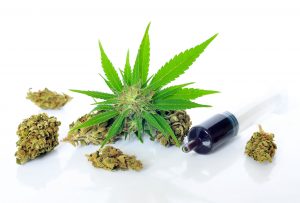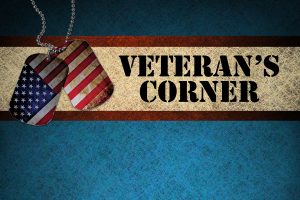How does cannabis work?
Most of us were introduced to cannabis as a street drug that was illegal, because it was a gateway drug to really “bad drugs.” We never wondered how cannabis got you “high” like alcohol or opiates. We did know that we didn’t feel bad after having some, like with alcohol and other pharmaceutical drugs, except the late-night raid on the fridge set the waistline up a few inches. Some of us didn’t like it because we felt strange and a little paranoid, others liked the “high.” Ultimately, we didn’t know about our endocannabinoid system.
For most people, “how” cannabis works is something we thought chemists and doctors knew. In this instance, we didn’t know why cannabis worked, yet had been used medicinally for over 5000 years. Cannabis, as medicine, can alleviate far more medical problems than most drugs over, under, or behind the counter and without harm to the body. The question of HOW cannabis works medicinally has finally been researched, but getting people to understand a little about it, (including the medical profession), is the purpose of this article.
A little history
The focus of cannabis research in the second half of the 20th century was pretty one-sided. The American Medical Society’s Dr William Woodward, in 1937, after two hours of testimony before congress stated “the AMA knows of no dangers from the medical use of cannabis” and he pointed out that the government had no credible scientific evidence to prove it was a problem, including the fact it had been used for hundreds of years and no known overdose or problems. 1 Also discussed at this same meeting was the opium crisis as being far worse menace than cannabis.
The government spent the next 50 years trying to prove cannabis was a problem to justify keeping cannabis illegal. It never had any science to prove the claims that it would lead us to degrading behavior and ruin.
The government also stopped all other schools of medicine that didn’t use allopathic approach, no more herbal medicine allowed, no homeopathic medicine allowed as other herbs like cannabis had hundreds of years of safe use. 2 The drug companies gained power in medical schools and education, so cannabis as medicine was forgotten. However, time and time again, the government started research to prove it was a bad drug and the studies came out saying it was not harmful and no reason to make it the toughest on the schedule of drugs. It has been listed next to heroin as Schedule 1 drug despite most of the opiates being listed as a Schedule 2 drug and far more dangerous.
The Nixon administration had conducted the largest research to that date and it said cannabis was NOT a gateway drug and should not be a schedule 1 drug and further investigation was needed as to HOW it worked. 3 Researchers wanted to do extensive studies to understand why there has never been a known overdose. How was that possible and how does it work? The government’s answer was to destroy all the research studies to that date per President Gerald Ford.4
In other countries
Fortunately other counties were more interested in facts, and in Israel Dr. Ralph Mechoulam continued his research and in 1964 he figured out the chemical structure of THC, which is one of the 483 chemicals in cannabis that contributes to the “high” obtained from cannabis. The next number of years had us figuring out what in a human body reacts with the THC . This led to the discovery of the endocannabinoid system (ECS) of a human body. 5 It was discovered that the ECS is the master regulator of human function, or physiology. It’s an overarching system of regulating how your physical body interacts and protects you from the environment around you. Science calls it maintaining homeostasis.
Our own cannabinoids and our receptors
We make our own cannabinoid substances very much like THC and they interacts with the endocannabinoid receptors called CB1and CB2. The CB1 receptor is found largely in the brain and the CB2 in the immune system and everywhere in the body. There are no receptors in the areas of the brain that control breathing or slowing the heart like opiates do so that’s why there isn’t an overdose issue.
We discovered some of the human endocannabinoids, like 2AG and Anandamide, that help control brain protection and function. So your CB1 or CB2 receptors are what you want your personal endocannabinoids to influence to get a certain protective or functional response. Examples would be your cannabinoids would influence a CB1 receptor and it would act like a seizure circuit breaker, or inhibit pain signals, control your anxiety, fear and stress, or regulate inflammation.
The Endocannabinoid System
The Endocannabinoid System (ECS) regulates information processing, your process for learning and memory, how your gut works, recovery from a stroke or heart attack, and according to Dr. Mecoulam “endocannabionoids apparently act in just about every system people have looked at.” 6
So again another example of how it works; you have a traumatic brain injury, your ECS immediately reduces the extent and severity of your brain injury, reducing inflammation, pain, and starting repair. This is why the US government grabbed a patent titled “Cannabinoid as Antioxidants and Neuroprotectants” in October 2003 awarded to the Department of Health and Human Services. 7 The patent claims exclusive rights on the use of cannabinoids for treating neurological diseases, such as Alzheimer’s, Parkinson’s and stroke, and diseases caused by oxidative stress, such as heart attack, Crohn’s disease, diabetes and arthritis and other conditions. Weren’t they smart to do that!
Our endocannabinoid system will influence the way we recover from pretty much any illness or problem resulting from inflammation. This includes mental illness, which is just another way of saying the brain is on fire due to inflammation in the brain and elsewhere in the system.
Cannabis and hemp
So how does cannabis and hemp figure into this? In nature there are bio identical plant based options to support a damaged or overwhelmed endocannabinoid system in humans and all vertebrate species. The two types of cannabinoids that commonly are talked about from cannabis are THC, which accounts for the psychoactive component and much of the pain-relieving properties, and CBD a non-psychoactive chemical which acts as a balancing (or antidote for too much) THC, as well as many other amazing properties. Cannabis and hemp, (as well as echinacea and sunflowers) to date are the only plants we know have any measurable human cannabinoid like substances in them.
Cannabis strains (called chemovars) have varying amounts of many different cannabinoids and hemp has mostly CBD and much less, and almost no discernable, THC. So medicating with cannabis or hemp is like boosting the body’s ECS, a system associated with physiologic health and wellbeing.
Currently
So we started the early 20th century knowing cannabis worked but not how it worked and it was in most every pharmaceutical preparation until 1938. Then the government said forget the anecdotal evidence of 5000 years of use, and made cannabis something that made you “stoned, lazy, addicted, violent, mentally impaired for life, or mentally disturbed,” despite the large amount of research to the contrary. Finally, the science tells us that we have an endocannabinoid system in our bodies that often needs help, as it is the guardian of our nervous system and regulates the neurobiology of our pain and ability of the body to maintain balance (homeostasis).
We now know that some of us have had damage, from the environment we have encountered to our ECS, and can’t regulate the environment as easily. This is due in part to toxins severely damaging our guts and immune system. Often overwhelming emotional traumas can’t be forgotten that create pathways or “loops” in some people’s brains and can continually cause anxiety and PTSD, possibly because some vulnerability genetically in their endocannabinoid system. We finally have the legal right to do research in the United States.8
We know now that using cannabinoids from plants, such as cannabis and hemp, are easily available and grown, and don’t need a billion dollar process and justification for us to take, (such as a pharmaceutical drug needs). They help us repair and enhance our ECS and are safe and effective.
What's next?
So why is it that not all medical and pharmacy schools are teaching the endocannabinoid system, and current data says most medical schools don’t teach it. Nor is it taught in high school and college biology? 9 Good question, and hopefully the next couple years will show that we are all more educated about our bodies and how to keep our endocannabinoid system safe and working. Also its hopeful that we will all have the right to use a little help when needed from organic, biodynamic plant sourced medicine that has helped us for 5000 years.





